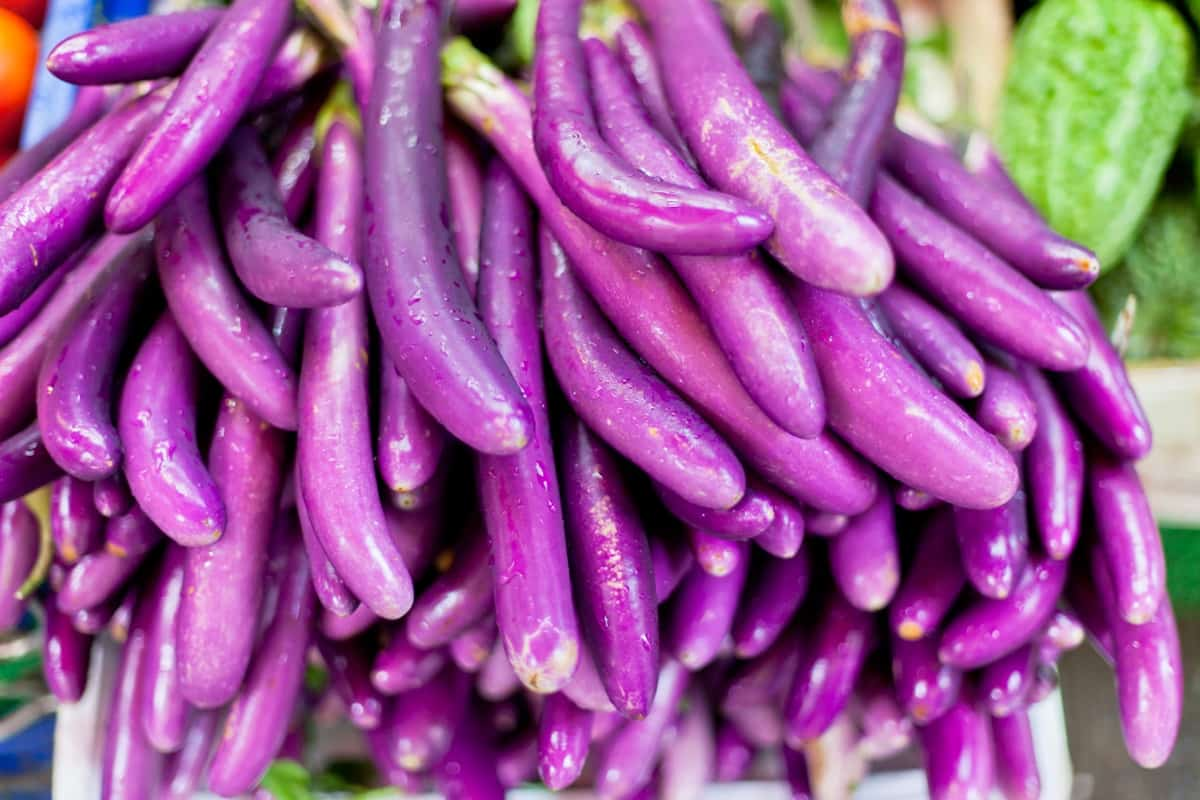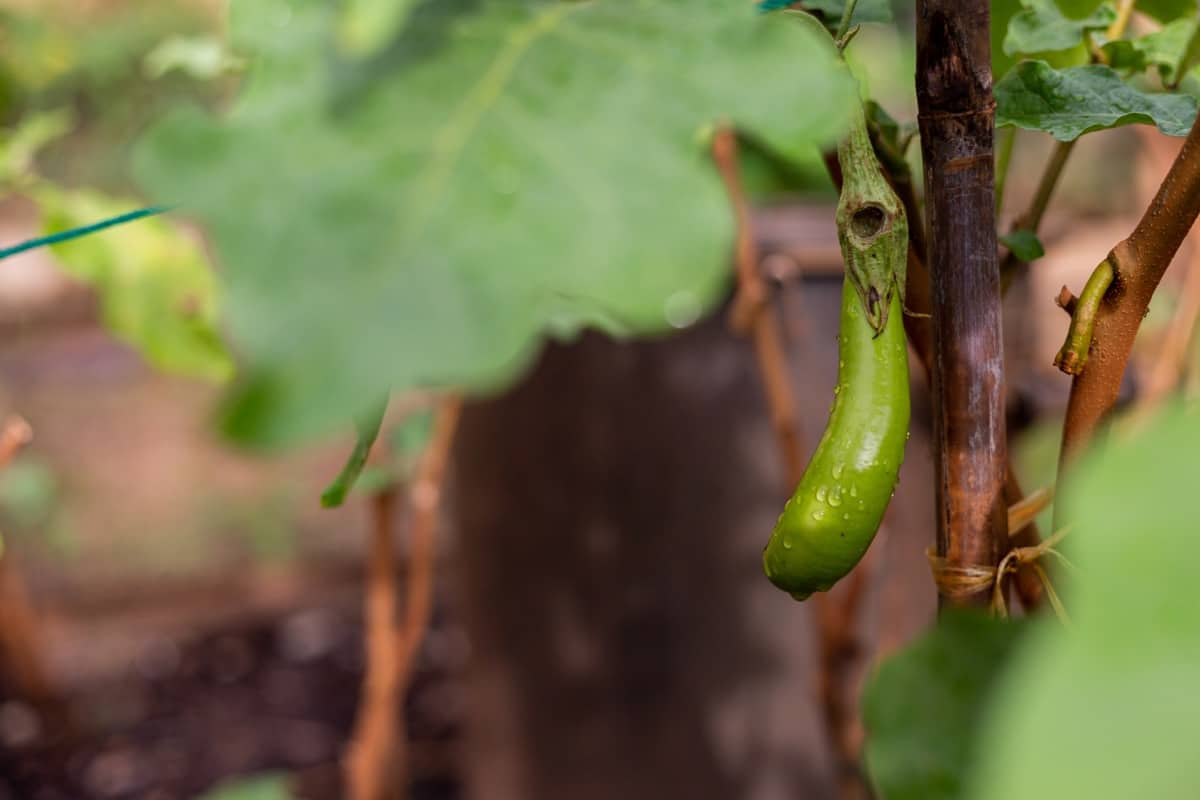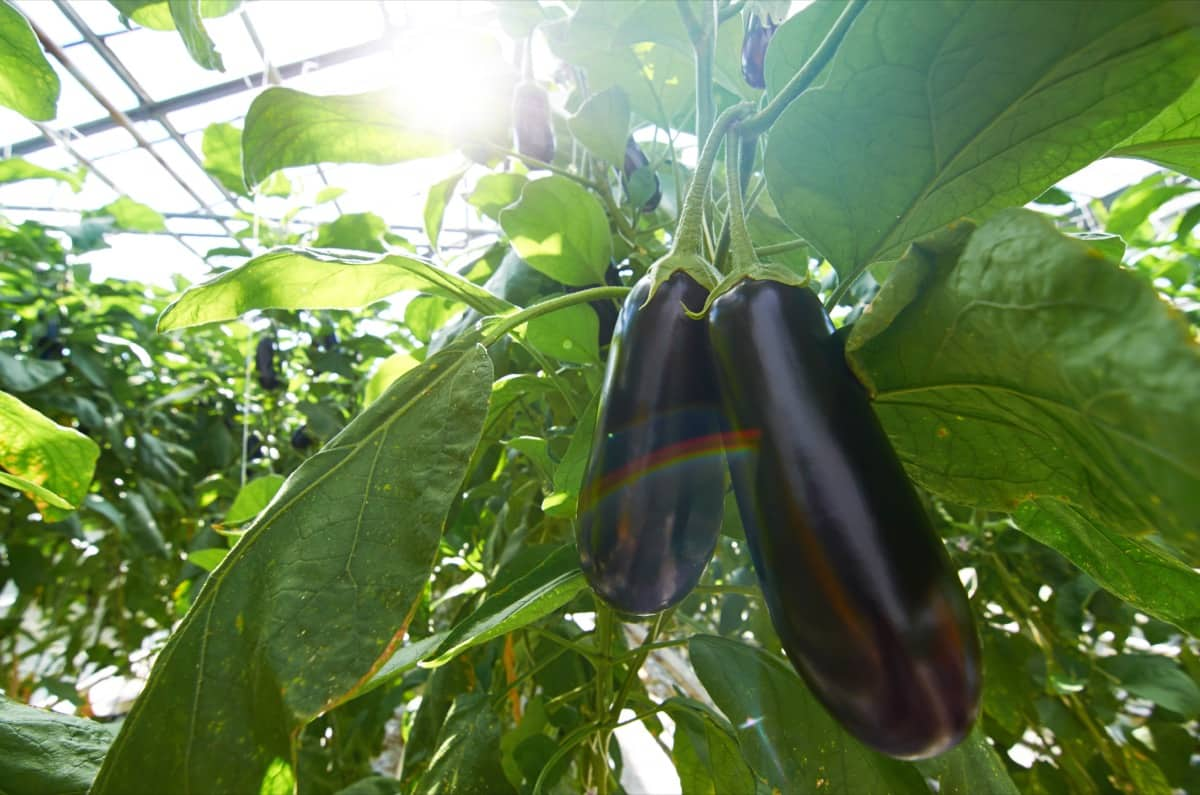It’s no secret that brinjal, or eggplant, is a vital vegetable used in a wide variety of dishes throughout the globe. The long green and violet varieties are especially popular due to their unique flavor and color. Growing brinjal at home can be a fun and rewarding experience, and with a few simple steps, you can have a bountiful crop in no time. Below we learn how to grow brinjal from seeds or seedlings at home and a step-by-step guide on how to grow long green/violet brinjal at home.

How to grow Long Green/Violet Brinjal at home
When to plant Long Green/Violet Brinjal?
The best months to grow long Green and violet brinjal is during the monsoon season, typically between June and September. During this time, the soil is moist and warm, providing ideal conditions for seed germination and growth. Additionally, the monsoon season provides the necessary rainfall to keep the soil consistently hydrated, reducing the need for frequent watering.
However, it’s important to remember that the exact timing for planting brinjal will depend on your region’s climate and growing conditions. In certain regions, brinjal can be planted sooner or later in the year, but it’s advisable to check with a local gardening expert or do some research. Choosing a planting location that provides ample sunlight and well-drained soil is also essential to maximize your crop yield.
How to grow Long Green/Violet Brinjal at home?
Choosing the suitable Brinjal variety: When choosing a brinjal variety, it’s essential to consider your area’s climate and growing conditions. Long green and violet brinjal varieties are best suited to warm tropical climates. They prefer full sun exposure and well-drained soil. Additionally, it’s important to choose a variety that is resistant to common pests and diseases, as these can have a significant impact on the yield of your crop.
Preparing the soil: Prepare the soil using compost or other organic matter before sowing your brinjal seeds or seedlings. To thrive, brinjals need well-drained, organic-rich soil. Add compost or other organic material to thick, clay-like soil to lighten and aerate it. It’s also a good idea to add a balanced fertilizer to the soil to ensure your plants get all the nutrients they need.
Planting the seeds or seedlings: When the ground is ready, you can plant brinjal seeds or seedlings. Seeds should be planted in seed compost in seed trays or pots. Make sure the seeds get plenty of water and sunshine. Keep the soil moist but not drenched; new growth should appear in a few weeks.
Wait until the soil has thawed and the danger of frost has gone if you want to sow seedlings. Carefully remove soil and dig a hole for each plant, using special caution not to disturb the roots. Backfill the soil, water the well, and apply mulch around the plant’s trunk and roots to keep moisture in and weeds out.
Caring for your Brinjal plants: After you’ve gotten your brinjal plants going, you’ll need to give them the attention they need to produce a healthy and plentiful harvest. Full sun and loose, fertile soil are ideal growing conditions for brinjals. Keep the soil moist, but not drenched, with frequent waterings for your plants. Root rot, caused by overwatering, can kill your plants.
In case you missed it: How to Grow Hydroponic Tomatoes: Indoors, Yield, Problems, and Solutions

In addition to keeping them hydrated, your brinjal plants will thrive with a balanced fertilizer and consistent watering. Feeding your plants with a well-balanced fertilizer once every four to six weeks can help them flourish. Plants can become extremely tall and heavy when loaded with fruit, so you may need to offer extra support in the form of stakes or a trellis.
Harvesting your Brinjal: When your brinjal plants are mature, you can expect to begin harvesting fruit in about 60-90 days. To determine if brinjal is ready to be harvested, gently press the skin. If it gives slightly, it’s ready to be picked. Use a sharp knife to remove the vegetable from the plant, taking care not to nick the stem or the leaves around it.
Brinjals will continue to produce fruit throughout the growing season, so regularly check your plants and harvest the fruit as it becomes ready. Overripe fruit will become soft and mushy, so it’s important to harvest your brinjals before that happens.
Frequently asked questions on how to grow brinjal at home
How long does a Green Eggplant take to grow?
After around 85 days, your brinjal will be ready for picking. When fruit is solid, and the skin is shiny, it is ready to be eaten. Cut the fruit from the stem, leaving approximately 3 cm. Repeated pickings will increase yield.
What is the best fertilizer for Eggplant?
Every week, spray some soluble fertilizer on the plants. It’s recommended to use a 1-1-1 ratio fertilizer, such as 20-20-20 or 20-30-20, till the plants bloom. After flowering, apply a fertilizer with a nitrogen-to-potassium ratio of 1-1.5-3 or 4-to-1 or a 9-15-30 combination with a high potassium content.
What is a homemade fertilizer for Eggplant?
Add nutrients and lighten the soil by digging in 2–4 inches of compost and/or manure. Fertilize your eggplant seedlings with organic fertilizer, such as dried chicken dung or other manure.
How to grow Eggplants/Brinjal in pots?
Initially, choose a container with adequate drainage holes at least 12 inches in diameter. High-quality potting soil, ideally with a pH between 6.0 and 6.8, and a high-organic-matter content should be used to fill the container. Plant the seeds or seedlings at a distance of 12 to 18 inches apart.
In case you missed it: How to Grow Yellow Cucumber (Dosakaya) in Home Garden: Pots, Backayrd, and Terrace

Keep the container in direct sunlight and water it frequently, but avoid drowning the plant. Use a balanced fertilizer once every four to six weeks, and if your eggplants or brinjals require extra support, like a trellis, construct one. Your efforts in tending to your potted eggplants and brinjals should be rewarded with wonderful, fresh produce.
Conclusion
Brinjal is a multipurpose vegetable with great taste and nutrients. Long green/violet brinjal could be a great addition to your home garden, whether for consumption or sale.
- Feed Your Flock for Less: Top 10 Tips to Save on Chicken Feed
- Ultimate Guide to Ossabaw Island Hog: Breeding, Raising, Diet, and Care
- Hatching Answers: The Top 10 Reasons Your Chickens Aren’t Laying Eggs
- Eggs and Economics: Breaking Down the Cost of Raising Backyard Chickens
- Defend Your Greens: Proven Methods to Keep Iguanas Out of Your Garden
- Ultimate Guide to Cinnamon Queen Chicken: A Comprehensive Guide for Beginners
- Ultimate Guide to California Tan Chicken: Breeding, Raising, Diet, Egg-Production and Care
- Ultimate Guide to Marsh Daisy Chicken: Breeding, Raising, Diet, and Care
- 10 Types of Chicken Farming Businesses You Can Start for Profits